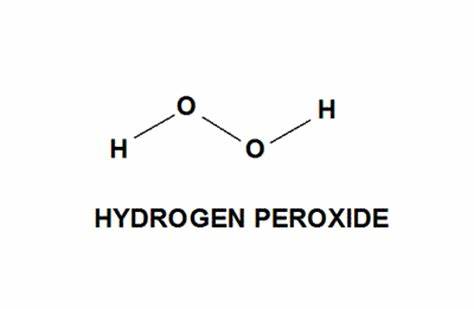Product
Hydrogen peroxide
Introduction
Hydrogen peroxide (H2O2) is a powerful oxidizing agent and chemical compound with a molecular formula of H2O2. It is a clear, colorless liquid with a slightly sharp odor and is composed of two hydrogen atoms and two oxygen atoms, interconnected by a single bond in a bent structure. It is known for its antiseptic properties, bleaching capabilities, and use in various industrial and medical applications.
-
Preparation using traditional method
The traditional method of preparing hydrogen peroxide involves the autoxidation of an aqueous solution of hydroquinone and an alkali, such as sodium hydroxide, in the presence of air. This process relies on the slow oxidation of hydroquinone, a reaction that takes time and requires careful control of conditions to prevent explosive peroxide formation. It is an energy-intensive and somewhat hazardous process due to the potential for peroxide accumulation.
-
Reaction
In the traditional method, hydroquinone (C6H6O2) is oxidized by atmospheric oxygen in the presence of a base, forming hydrogen peroxide. The reaction can be represented as: C6H6O2 + O2 → H2O2 + other byproducts
-
Disadvantages of traditional method
The primary drawback of the traditional method is its slow reaction rate and safety concerns. The process requires careful control of temperature, pressure, and reactant concentrations to avoid peroxide accumulation, which can lead to explosive hazards. It also consumes significant energy and produces byproducts that require further treatment.
-
Preparation using Green method
A greener and more efficient method for hydrogen peroxide production involves the direct synthesis from water and oxygen using a solid-state catalyst. This method eliminates the need for hazardous reactants like hydroquinone and simplifies the process.
-
Reaction
In the green method, hydrogen peroxide is formed by the direct combination of oxygen and water in the presence of a solid-state catalyst. This reaction is catalyzed by various transition metals, such as palladium or platinum, and can be initiated through photocatalysis or other innovative techniques.
-
Advantages of Green method
The green method offers several advantages, including improved safety, reduced environmental impact, and higher production efficiency. It avoids the use of hazardous reagents and minimizes the formation of unwanted byproducts, making it a more sustainable approach. Additionally, the process can be fine-tuned to achieve higher selectivity, which is especially valuable in industrial applications.
-
Applications
Hydrogen peroxide has a wide range of applications, from household uses as a disinfectant and bleaching agent to industrial applications as a chemical oxidizer and rocket propellant. It is used in the paper and textile industries for bleaching, in the electronics industry for semiconductor fabrication, and in healthcare as an antiseptic and wound disinfectant. Its versatile properties and relatively eco-friendly green synthesis methods make it an essential chemical in various fields.


